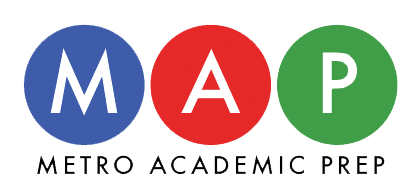This essay was written by a medical school applicant.
The plane lifts off the runway and I can already sense the anxiety of the student next to me as his eyes dart erratically out the window. I place a hand on his just as a “Yeehaaa!” erupts from the experienced jumpers behind me. The student looks at me with a forced smile, trying to relax and join in on the fun. By the time we reach 3,000 feet, he is clutching his knees to his chest. I hold his shoulders and make eye contact with him, breathing in and out deeply and audibly and gesturing for him to do the same. I smile at him and he smiles back, his face calmer.
I methodically check his gear and then face all the jumpers. “Door!” I yell, and open the side of the aircraft, letting the wind rush in. My student looks terrified as his eyes probe into the vast sky. I lean in close and shout, “Are you ready to skydive?” He shakes his head side to side and says, “You guys are crazy.” The veteran skydivers onboard laugh at this. I get in close again and say, “We’re moving as fast as a car on the highway. Just stick your hand out and feel.” I put my arm out the open door to show him it’s safe. He copies me and smiles tenderly, and so I take the nervous first-timer by the hand and inch him over to the edge. He is perhaps the twentieth student I have had to talk out the door in the 630 jumps I’ve performed as an instructor. “Go!” I finally shout. He squeezes his eyes shut, releases his hold on the plane, and shrieks wildly as he leaps into the abyss . . .
My role as a skydiving instructor, which I’ve assumed part-time for a decade, has required the very skills and approach that I will need to call upon as I pursue a professional path in medicine. With skydiving, safety is the top priority. Nothing else can proceed without strict adherence to this principle. Similarly, one of the primary codes of modern medicine claims, “First, do no harm.” Once safety is ensured, it is the goal of a professional to truly listen. Skydivers have questions, concerns, fears, expectations, and hopes; it is my job to encourage them to express each. Then it is my task to communicate effectively and compassionately the steps of the procedure. My experience as a medical patient has demonstrated the difference between a doctor who genuinely pays attention to me and fully explains the complexity of a situation and a doctor who simply is going through the motions. All of this interaction necessitates a mastery of the technical knowledge, whether that entails knowing how to pack a parachute or understanding the anatomy and physiology of the human body. With these combined skills, I have helped many people who were seeking something—a thrill, a revitalization—just as I hope to one day provide for those who will come to me in medical need.
My degree in psychology has enhanced my natural abilities to listen to others and empathize with their emotional states. My exposure to various cultures originally allowed me to develop these qualities. I was raised in ethnically rich New York City by my Native American/African American caretaker, who often took me to the reservation she grew up on, helping me cultivate a knack for listening through their folklore. She also instilled in me a sense of taking care of others, a responsibility I took on while visiting the younger children on the reservation. This multicultural background was vital to my decision to live in Kenya for three months during the summer of 1992, building schools for an agricultural village. I subsequently studied African dance and took Swahili in college as a result of my time in Kenya. Through these experiences I refined my ability to relate to different people with different perspectives.
My Native American roots also exposed me to dance through pow-wows. I went on to study dance for many years, minoring in performance and choreography in college. This provided me with my first insights to the nature of the movement, structure, and function of the body’s various parts. Devouring books on anatomical alignment and structural physiology became a hobby of mine, which led to my interests in the mind/body interconnections inherent in dance/movement therapy.
Dance was just the beginning of my passion for sport. My childhood was one big experiment with my physical limits and although I have outgrown my risk-taking, I still harbor a love for physical activity. I have taught swimming, horseback riding, dance, gymnastics, snowboarding, and skydiving. Having been a lifeguard who has had to save swimmers with CPR, a skydiving professional who has seen broken bones and the ensuing healing process, and a lifelong proponent of helping individuals and communities, it is clear that I am made for the healing arts. My fascination with the resilience and fragility of the human body, in conjunction with my innate caretaker role, has naturally culminated in my pursuit of sports medicine, specifically physiatry and orthopedic surgery.
… When I land shortly after the newbie skydiving student, he runs over and throws his arms around me. “Thank you! Thank you!” he keeps gasping in between his panting breaths. “That was amazing! I never would’ve done it without you.” The smile on his face is beyond words.
This is why I’ve done what I’ve done, and why I’m doing what I’m doing now.
